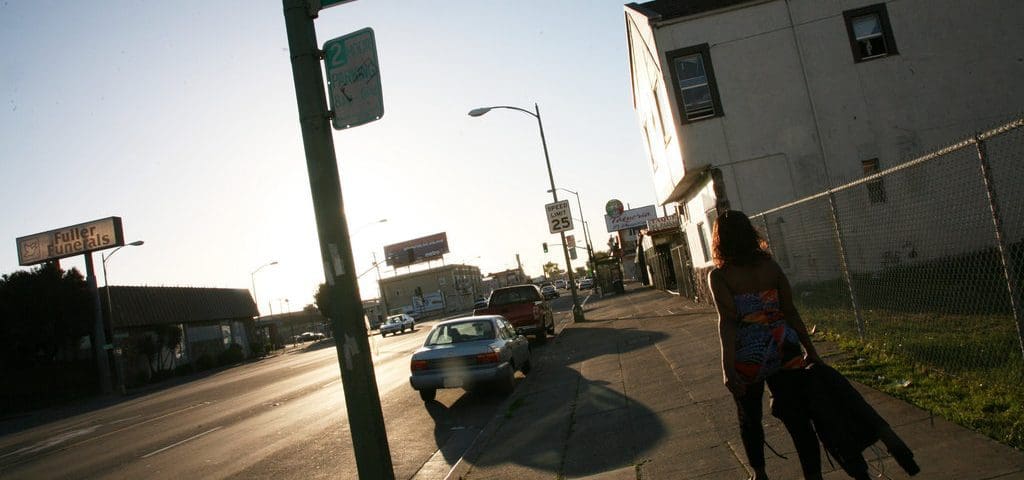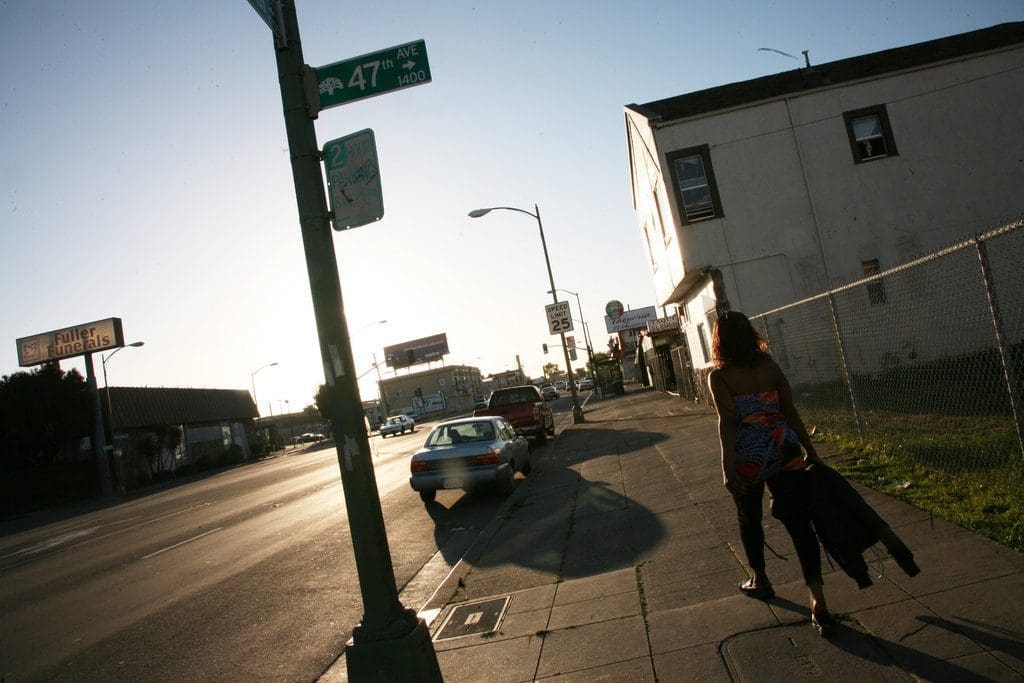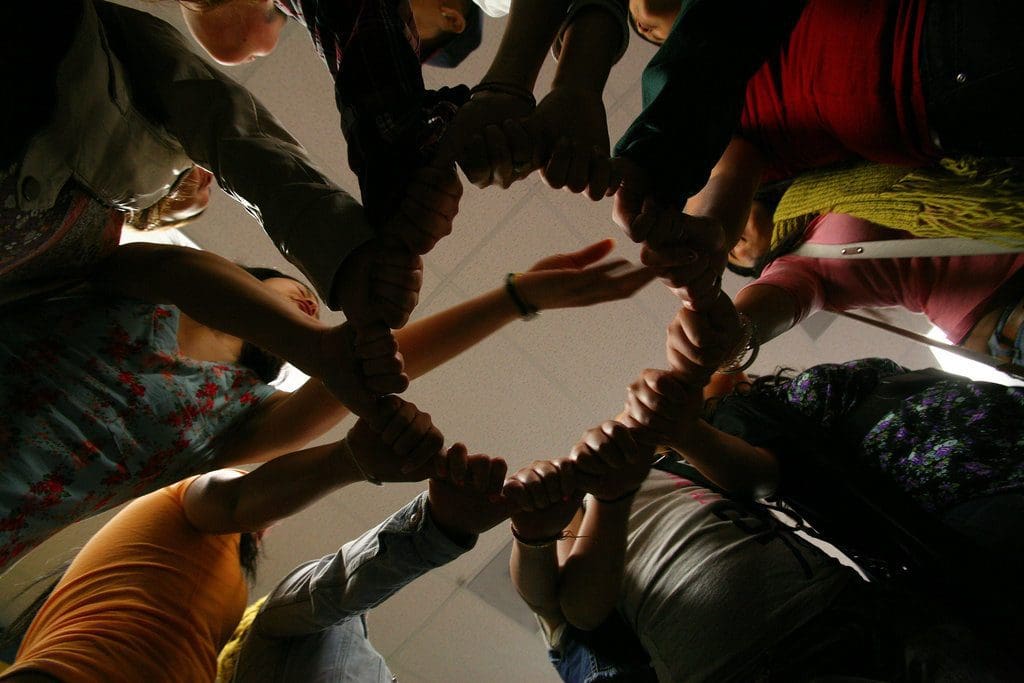
OAKLAND, Calif. — Dr. Kimberly Chang, a physician at a community clinic in Chinatown, will never forget the first young girl she suspected had been sold for sex.
Kalea, a 15-year-old Cambodian-American girl who grew up in Oakland, kept coming in to be examined for sexually transmitted diseases, the beginning of a grim cycle of diagnosis and treatment. “I started asking, ‘Are you having sex with new people?’ ” Dr. Chang, 37, recalled. “It was always, ‘No, no, no, no, no.’ Eventually she confided that she was worried about ‘a friend.’ That’s when I asked, ‘Are you trading sex for money?’ ”
Emerging from a long, dark tunnel, Kalea slowly began to spill her stories. How her father beat her. The childhood rape. The out-of-control john who tied her up in a motel bathtub and filled it with scalding water.
Seven years and hundreds of patients later, Dr. Chang’s clinic, Asian Health Services, is in the vanguard of a new public health approach to treating American-born minors lured into the sex trade, a problem enforcement officials and child advocates say has exploded with the Internet.
Once viewed as criminals and dispatched to juvenile centers, where treatment was rare, sexually exploited youths are increasingly seen as victims of child abuse, with a new focus on early intervention and counseling. There is growing recognition that doctors can be first responders, intervening before long years of exploitation and abuse can take an even greater toll.
In Oakland, a handful of organizations that grew out of Asian Health Services have developed new programs for Southeast Asian minors that “take into account the complex culture of foreign-born parents and their American-born children,” said Dr. Sharon Cooper, a forensic pediatrician and child abuse expert at the University of North Carolina School of Medicine.
An estimated 100,000 to 300,000 American-born children are sold for sex each year. The escalating numbers have prompted national initiatives by the F.B.I. and other law enforcement agencies, and new or pending legislation in more than a dozen states, most recently Georgia, which enacted a toughened human trafficking law this month.
The Oakland health clinic is confronting an underground within an underground — the demand for Asian-American girls, with Cambodian-Americans among the most vulnerable. Many immigrant Cambodian parents struggle with poverty compounded by the experience of genocide and its traumatic aftermath, depression. The emotional fallout is ricocheting through generations.
“Oakland is an open-air sex market for young children,” said Sharmin Bock, assistant in charge of special operations for the district attorney’s office in Alameda County, where Oakland is.
The abusers may be pimps, even brothers, who recruit or kidnap girls from the streets and market them online through sites, where they are featured in pulsating ads for massage parlors, escort services, strip clubs, even acupuncturists.
“Asian women are exoticized in our culture,” said Elizabeth Sy, the co-founder of a program for at-risk girls called Banteay Srei that grew out of Dr. Chang’s clinic. “Many Southeast Asian girls come from new refugee populations. Recruiters target these girls because they know they are struggling with issues of cultural identity.”
Girls from many Southeast Asian families chase “an Americanized idea of love,” Ms. Sy said, growing up in emotionally distant households in which, she said, “parents never ask ‘How was school today?’ or say ‘I love you.’ ”
They fall prey to abusers who are highly motivated: the Polaris Project, a national advocacy organization, estimates that a stable of four girls earns over $600,000 a year in tax-free income for the pimp. Drug dealers here are increasingly switching to prostitution, inspired by the bottom line and fewer risks.
“The person dealing drugs has a finite amount of product to sell,” said Jason Skrdlant, an officer with the Oakland Police Department’s vice and child exploitation unit. “But a girl is reusable.”
Over time, Dr. Chang and her colleagues became aware of a disturbing pattern: young patients coming in regularly would bring their friends to be checked for sexually transmitted diseases. To provide social support, Banteay Srei was started to provide peer counseling, classes in women’s health and exchanges with elders to strengthen cultural bonds, including cooking classes.
At the clinic in Oakland’s Chinatown, some 40 doctors, nurses, nurse-practitioners and physician’s assistants know that “a date” can refer to the exchange of sex for money — nuances “we didn’t learn in medical school,” said Dr. Chang, whose staff can speak 10 Asian languages.
Videography, especially child pornography and the advent of 3G and 4G cellphone technology, has arrived at an insidious juncture: puberty is occurring earlier. The combination of early physical maturation and technology “are a perfect storm,” Dr. Cooper said. “These hormonal changes can be exploited, making it harder to discern what is O.K., and easier to groom a child.”
Maxi, a patient of Dr. Chang, had a narrow escape from the sex trade: she grew up off of one of the West Coast’s most notorious streets: International Boulevard, a seven-and-a-half-mile-long strip in the Oakland flatlands.
“You can be kidnapped just walking down the street,” Maxi explained.
“It’s ‘hey girl,’ and the next thing you know you’re kicking with him or some girl will talk to you and then snatch you up,” she said, referring to the bottom, a girl dispatched to recruit girlfriends and inflict punishment — in her case, being choked with a cable wire.
Maxi’s older brother was a pimp who, starting when she was 9, had her guard the “trap house” where he lived with prostitutes, some in their teens. For nearly three years, Maxi stood watch.
“I loved him very much,” she said of her brother. “I always thought it was normal.”
In her early teens, Maxi was arrested on auto theft and robbery charges, and a worried friend took her to Banteay Srei. Maxi, now 22, says: “I didn’t understand Cambodian that much, and my mom never gave an explanation, full-on, about being a woman. I think if it wasn’t for them, I probably would have wound up dead.”
About half the domestic minors sold for sex still live with a parent, said Richard J. Estes, a professor at the University of Pennsylvania and an authority on child commercial sex exploitation. But families who have experienced historic violence and genocide “often have a fear of law enforcement and are less likely to reach out for help,” said Suzanna Tiapula, director of the National Center for Prosecution of Child Abuse for the National District Attorneys Association in Washington. The clinics are “a point of access for these communities,” Ms. Tiapula said.
The district attorney’s office is now aggressively pursuing traffickers who once remained in the shadows, while providing counseling and housing for the minors. Feeling safe helps children face their abusers in court, Ms. Bock said. “It is difficult,” she said, “because many of the children are under the psychological control of the human trafficker.”
Dr. Cooper noted that medical evaluations in juvenile detention were generally confined to communicable or life-threatening diseases and did not include reproductive health, as they do at Asian Health Services and other clinics that work with sexually exploited girls.
Dr. Chang, at her family clinic, sometimes learns about an at-risk child during a check-up with parents, whose headaches and depression may reveal deep worry about a daughter or son. She asks that young patients return to the clinic, not just for medical reasons but “to restore their faith that there really are people out there they can trust,” she said.
They are girls who have never been in a swimming pool or on a swing. Among them is Veronica, 26, a Cambodian-Filipina community college freshman whose purse bulges with college papers. It also holds the red velvet heels she wears on weekends to make “out calls” in San Francisco for men who find her on the Internet.
When Veronica was 12, her stepfather, a custodian, would take her into empty buildings and touch her. On April 29, 2000, a date she remembers exactly, a man who flattered her persuaded her to become “occupied,” as she put it. He beat her repeatedly for seven years. “He would beat me for simple things, like not making enough money or worse, getting pulled over by a cop,” she said.
Although Veronica still works as “an independent” on weekends, she is studying business entrepreneurship. She hopes to become a wedding planner, though she says she will never marry. “I am afraid of relationships,” she said.
Kalea, who was a patient of Dr. Chang for five years, still struggles. She recently got her G.E.D. and has enrolled in dental hygiene school. “At a time when I felt I had no say in anything,” she said, “Dr. Chang listened.”
As she absent-mindedly smoothes her hair, she talks about yearning for the things she missed. She envies a little cousin, now in high school. Especially on spring evenings, she thinks about the gossamer dress she might have worn to her phantom prom.


